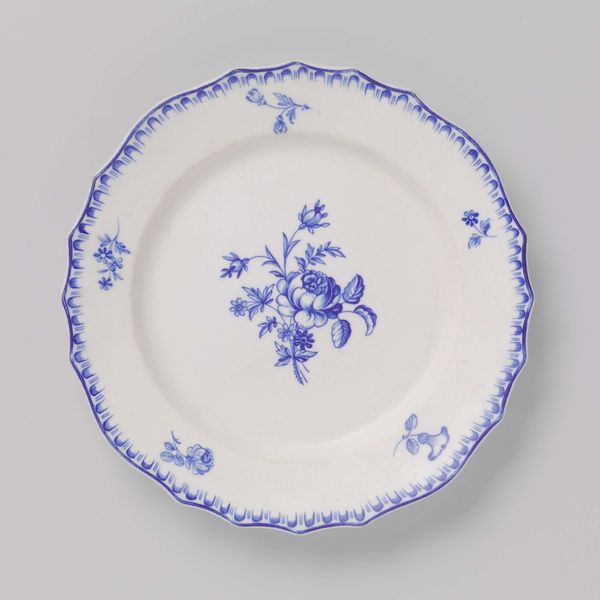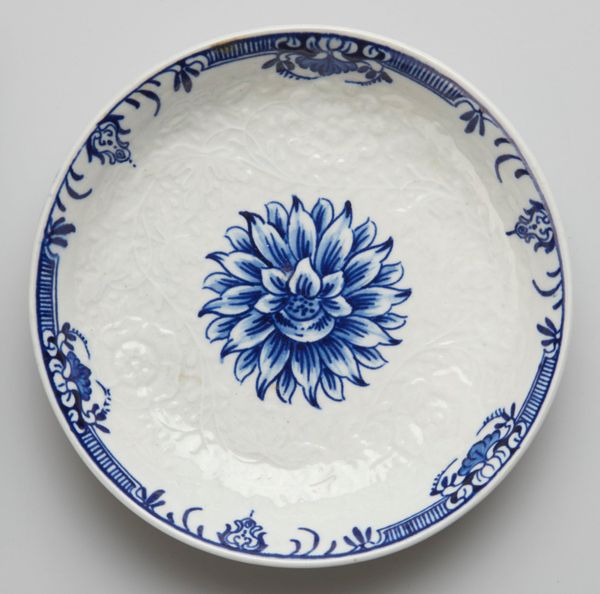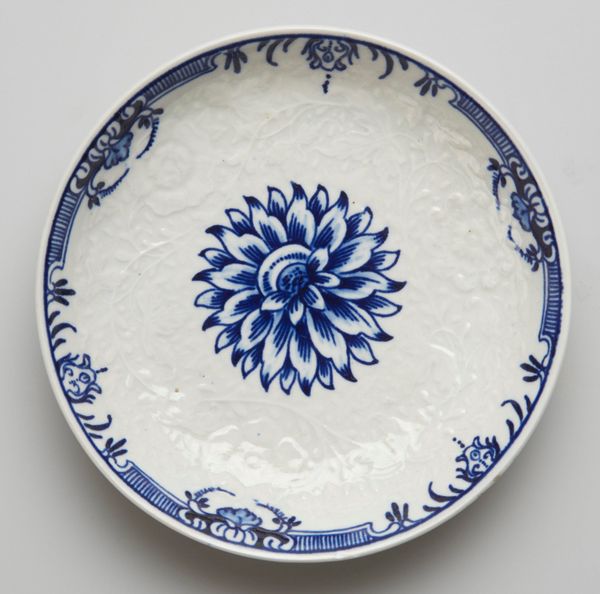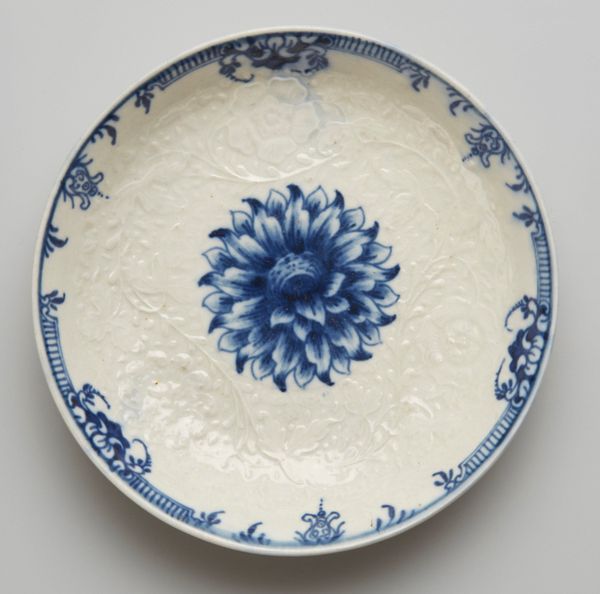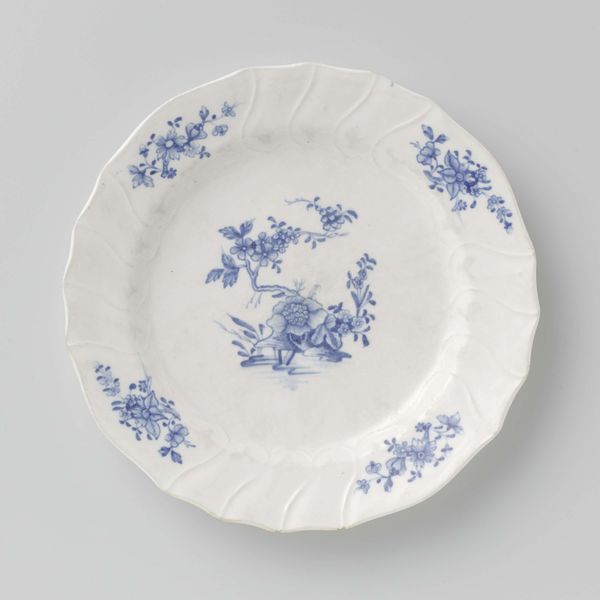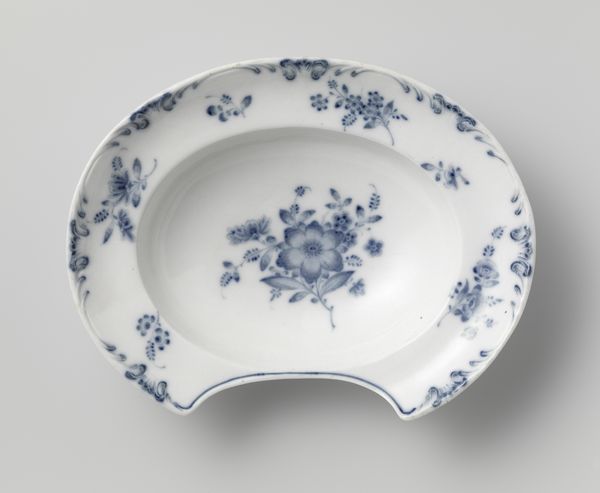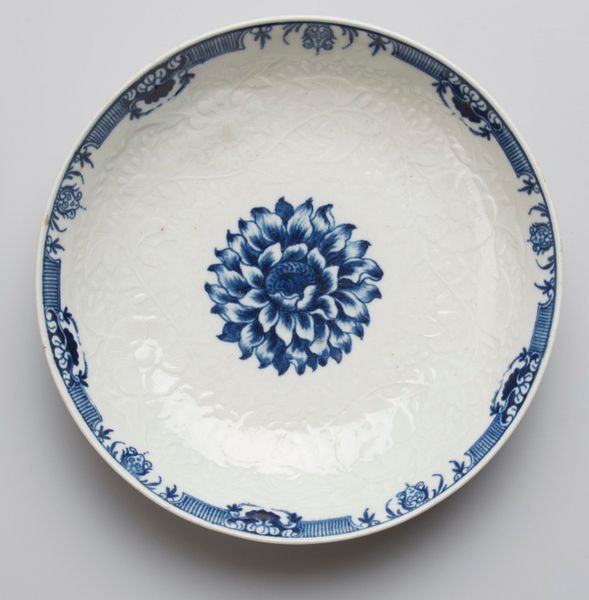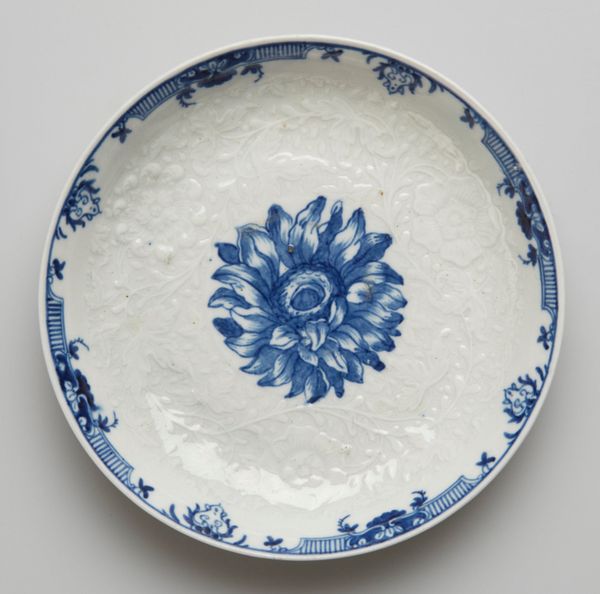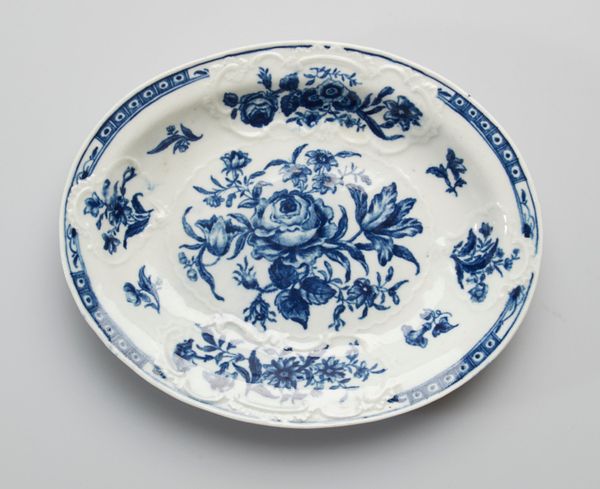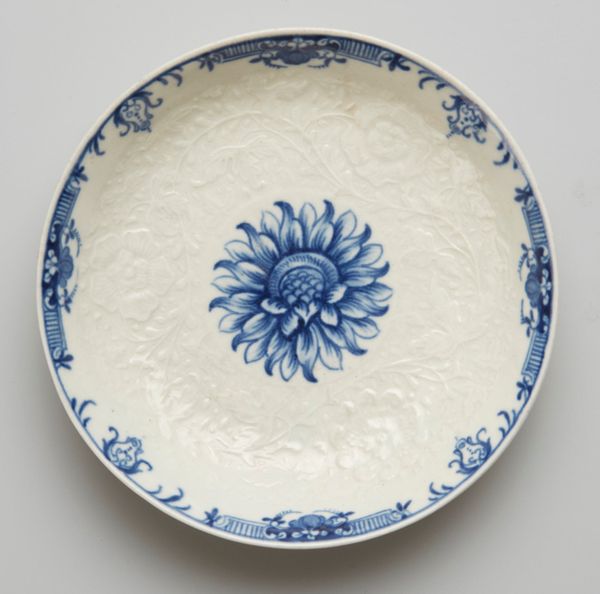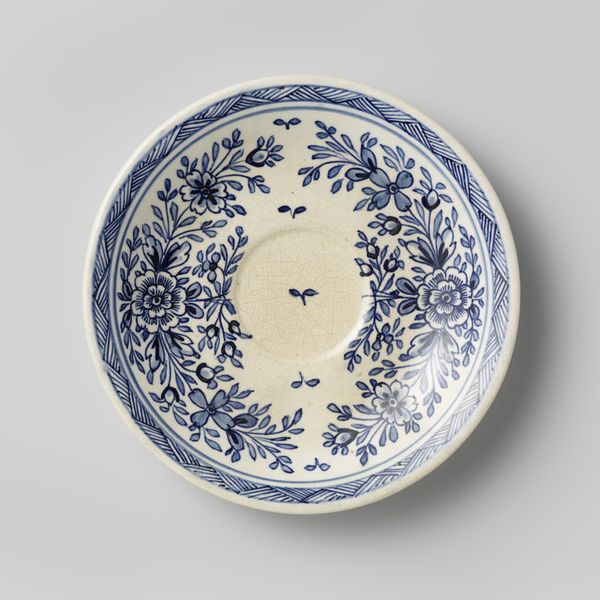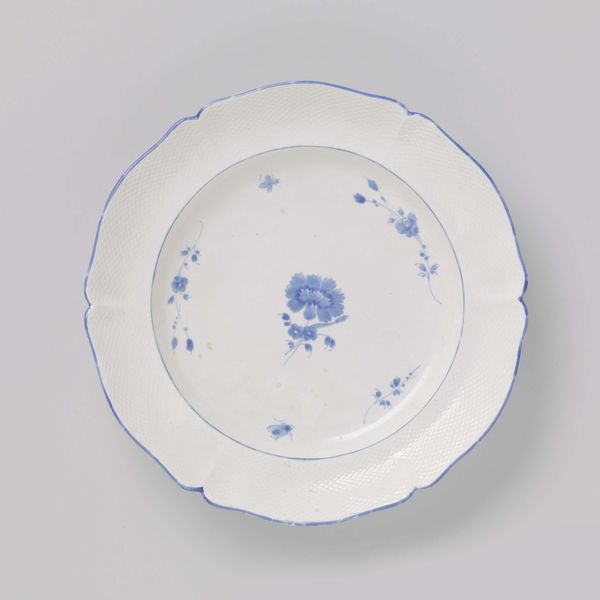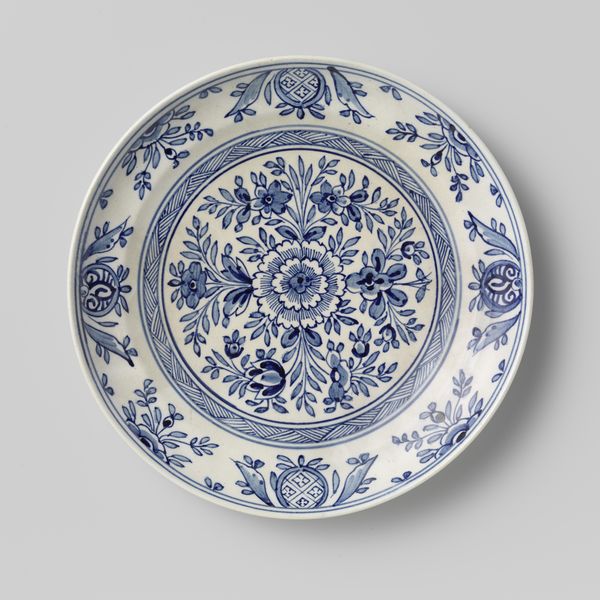
ceramic, porcelain
#
ceramic
#
porcelain
#
geometric
#
orientalism
#
ceramic
#
decorative-art
Dimensions: height 2.9 cm, diameter 13.0 cm
Copyright: Rijks Museum: Open Domain
This porcelain plate, decorated in blue and white, was made by Spode, a prominent pottery manufacturer. The blue and white porcelain plates are evocative of a specific era. They gained popularity during the eighteenth and nineteenth centuries when European manufacturers attempted to imitate Chinese porcelain. This period was marked by intense global trade and cultural exchange between Europe and Asia. Blue and white porcelain became a symbol of refinement and luxury among the European middle and upper classes. Staffordshire Potteries, where Spode was located, played a crucial role in the mass production of these ceramics, making them more accessible to a broader consumer base. The visual impact is simple yet sophisticated and speaks volumes about the commercial and cultural values of the time. To understand this historical and cultural context, we need to look at archival records, trade documents, and studies of consumer culture.
Comments
No comments
Be the first to comment and join the conversation on the ultimate creative platform.

